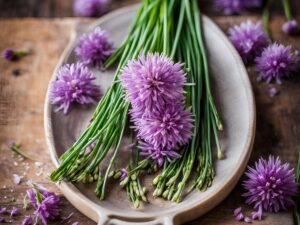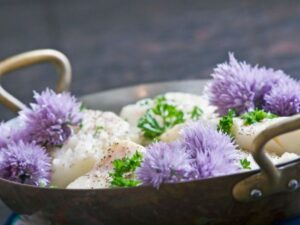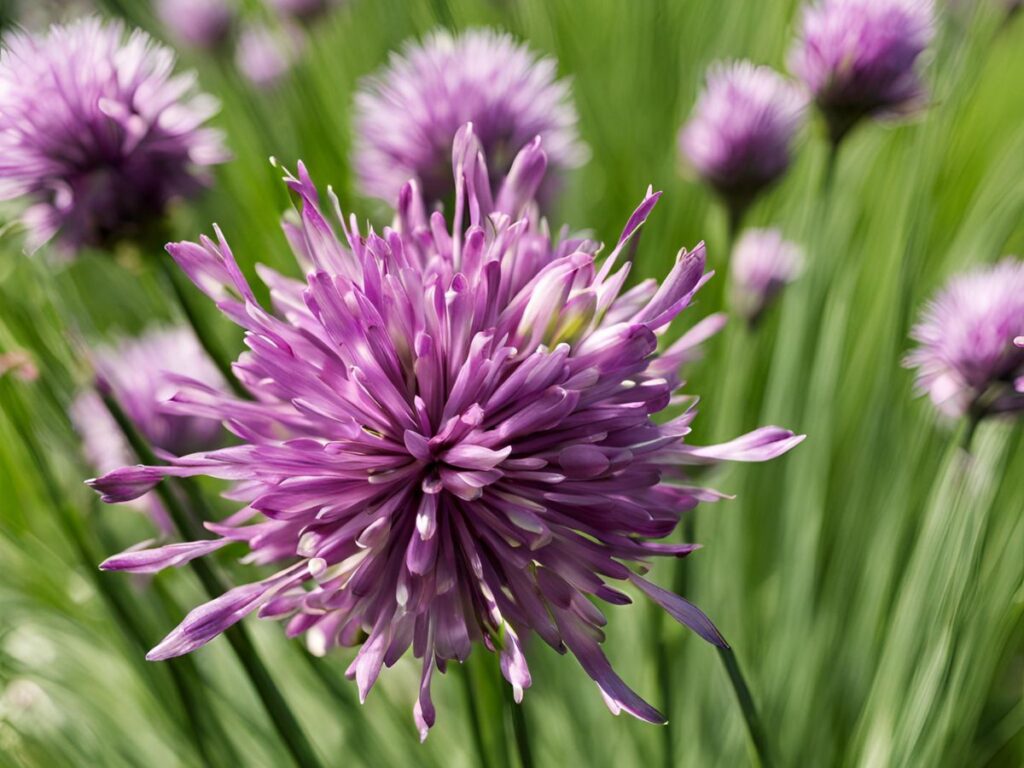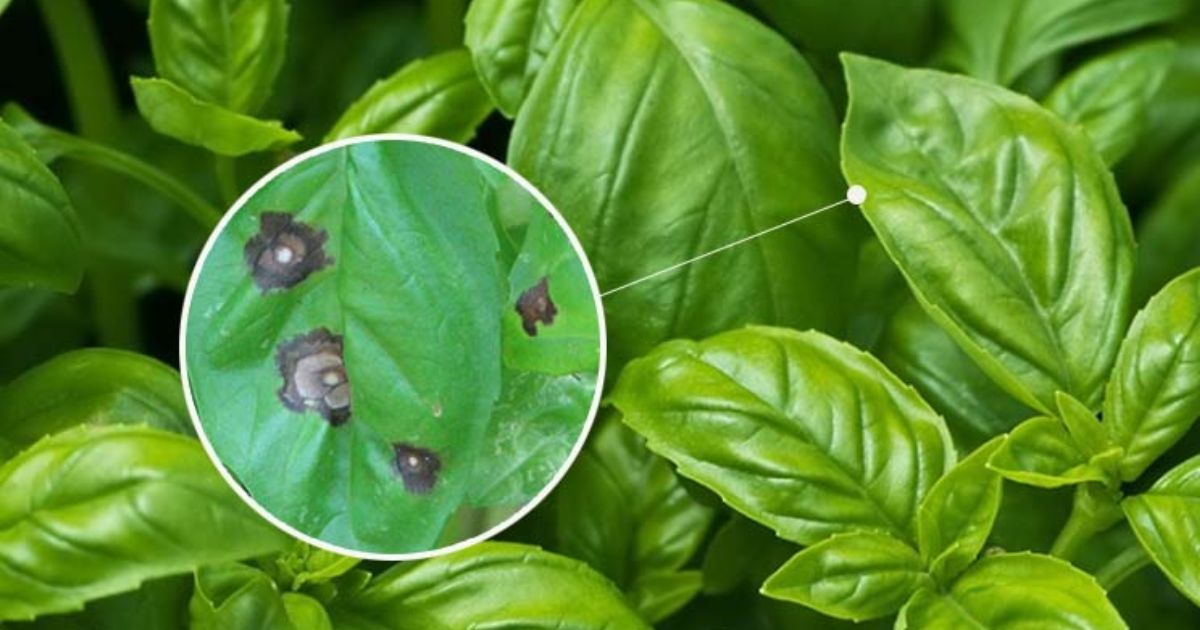Chive blossoms are a beautiful addition to any garden and offer a surprising array of benefits that extend far beyond their visual appeal. From their delicate, purple petals to their mild onion-like flavor, chive blossoms have become a popular choice for culinary enthusiasts looking to add color and taste to their dishes. But the benefits of chive blossoms don’t stop in the kitchen; these edible flowers have long been prized in conventional treatment for their impressive health-boosting properties. Whether you want to elevate your meals or enhance your wellness routine, chive blossoms offer a unique combination of flavour and natural healing power.
This article explores how chive blossoms can benefit you, from their role in the kitchen to their potential in the medicine cabinet. We’ll dive into the culinary uses that can make your dishes stand out and the health benefits that may support everything from your immune system to your digestive health. Discover how these vibrant blossoms can enrich your life in more ways than one.
What Are Chive Blossoms?
Chive blossoms are the small, spherical, purple flowers that bloom on the chive plant Allium schoenoprasum. The chive plant is a member of the allium family, including garlic, onions, and leeks. Known for their long, slender green leaves with a mild onion-like flavour, chives are widely used in cooking, particularly as a garnish or salads. The blossoms, typically a striking lavender or light purple, form at the top of the chive stems once the plant matures. These edible chive flowers on chives are not just visually appealing, but they also offer a subtle onion flavour that complements a variety of dishes.
Are chive flowers edible appear in the late spring to early summer, typically after the plant has been established and has grown several sets of leaves. The growth cycle of chives begins with planting seeds or dividing existing plants. Once established, the chives will sprout green leaves harvested for use. As the plant matures, usually around late May to early June, the chive stalks will begin to flower. The blossoms form clusters at the top of the stems, and the flowers are usually ready for harvest when fully opened but before they wither. This makes them perfect for picking and using in both fresh dishes and preservation methods like making chive blossom vinegar or oil.
Culinary Uses of Chive Blossoms
Chive blossoms are a visual delight and offer a delicate, onion-like flavour with a subtle garlicky undertone. Their mild taste makes them versatile and added to a variety of foods, including unique depth without overpowering other ingredients. The blossoms are sweet and tangy, enhancing savoury and light recipes with fresh, herbal notes. They are also high in vitamin C and antioxidants, providing a healthy boost to any dish they adorn.

Incorporating Chive Blossoms into Dishes
- Salads: One of the simplest ways to use chive blossoms is to sprinkle them on top of salads. The vibrant purple flowers add not only coloured colour but a mild onion flavour that complements fresh greens and vegetables. They pair particularly well with light vinaigrettes or creamy dressings, elevating your salad with freshness.
- Garnishes: Chive blossoms make an elegant garnish for a variety of dishes. Use them to top soups, adding both flavour and visual appeal. They’re also perfect for omelettes, scrambled eggs, and potato dishes like roasted or mashed potatoes. Their mild flavour enhances these foods without overwhelming the palate, making them a perfect finishing touch.
- Infusions: Consider infusing chive blossoms into oils or vinegar to get creative. Chive blossom vinegar, for example, is an excellent way to preserve the flavour of the blossoms and add a zesty touch to salad dressings, marinades, or drizzling over roasted vegetables. You can also infuse olive oil with chive blossoms to create a fragrant cooking oil that works beautifully in savoury dishes.
- Recipes: Incorporating chive blossoms into recipes is an easy way to take your cooking to the next level. For a simple and delicious spread, try making Chive Blossom Butter. Mix softened butter with finely chopped chive blossoms and a pinch of sea salt for a flavorful spread on bread, crackers, or grilled vegetables. Another easy option is Chive Blossom Cream Cheese—fold chopped chive blossoms into cream cheese and squeeze A little salt and lemon juice to make a delicious spread or dip.
Health Boost
Beyond their culinary uses, chive blossoms are packed with health benefits. Rich in antioxidants, they help combat oxidative stress and promote overall wellness. Their high vitamin C content also supports the immune system, making chive blossoms a perfect addition to dishes to boost your health. Whether sprinkled on salads or incorporated into homemade infusions, chive blossoms enhance the flavour of your meals and add valuable nutrients that benefit your body.
Chive Blossom Health Benefits
Chive blossoms are a delightful addition to your food and provide several health advantages that can enhance overall well-being. Packed with vital nutrients and natural compounds, these blossoms support everything from digestion to immunity. Let’s examine the prominent health advantages of chives:
Rich in Antioxidants
Antioxidants, abundant in can you eat the flowers on chives, are essential for scavenging the body’s free radicals. Free radicals are unstable substances that have the capacity to induce oxidative stress, which accelerates ageing and the rise of long-term conditions including heart disease and cancer. The antioxidants in chive blossoms, such as flavonoids and polyphenols, help combat this oxidative damage, protecting cells from harm and promoting overall health. Incorporating chive blossoms into your diet can support your body’s natural defence mechanisms and protect against cellular ageing.
Anti-inflammatory Properties
Chive blossoms have natural anti-inflammatory properties, making them beneficial for reducing inflammation in the body. Chronic inflammation is associated with various health issues, including arthritis, heart disease, and autoimmune disorders. The compounds found in chive blossoms, such as sulfur-containing compounds, may help alleviate symptoms of inflammatory conditions like arthritis by reducing swelling and joint pain. Including chive blossoms in your diet can help manage inflammation and support joint health, relieving the discomfort associated with conditions like osteoarthritis.
Digestive Health
Thanks to their fibre and prebiotic content, Chive blossoms benefit digestive health. Fibre is essential for maintaining healthy digestion because it helps gut health and encourages regular bowel motions by feeding beneficial bacteria in the intestines. Chive blossoms contain prebiotics, which helps nourish these good bacteria, enhancing their growth and improving the balance of the gut microbiome. Improved digestion is associated with a healthy gut microbiome, improved nutrient absorption, and a more muscular immune system. By adding chive blossoms to your diet, you can support optimal digestive function and gut health.
Rich in Vitamins and Minerals
Chive blossoms are packed with essential vitamins and minerals contributing to overall health. They are an excellent Vitamin C source, vital for collagen production, skin health, and immune system support. Vitamin C also helps the body absorb iron, another mineral in chive blossoms. Vitamin K is another key nutrient found in these flowers, playing a crucial role in blood clotting and bone health. Additionally, chive blossoms contain minerals like calcium and iron, essential for bone strength, muscle function, and oxygen transport. Incorporating chive blossoms into your meals provides a natural source of these essential nutrients, supporting overall health and vitality. growing asparagus in raised beds
Immune System Support
Chive blossoms boost the immune system thanks to their high vitamin C content. By boosting white blood cell production and their capacity to combat infections, vitamin C is believed to fortify the immune system. Additionally, chive flowers have antibacterial qualities that can help shield the body from dangerous bacteria and viruses. Consuming chive blossoms regularly may help reduce the likelihood of catching colds and other infections, keeping your immune system strong and functioning optimally.
Incorporating chive blossoms into your diet is an easy and flavorful way to support your body’s natural defences, from enhancing digestive health to boosting immunity. Their rich nutrient profile and medicinal properties make them valuable to any health-conscious diet.
Chive Blossoms in Traditional Medicine
Chive blossoms have been valued in traditional medicine for centuries and have a long history of use across various cultures. With their mild onion-like flavour, these vibrant purple flowers have been used in cooking and as natural remedies to address multiple health concerns. From treating digestive issues to boosting immunity, the medicinal applications of chive blossoms have stood the test of time.
Historical Use
In ancient civilizations, chive blossoms were widely recognized for their healing properties. The plant itself, Allium schoenoprasum, is part of the allium family, which has long been celebrated for its medicinal qualities. Ancient Egyptians, for example, used alliums, including chives, to promote good health and combat ailments. Similarly, in traditional Chinese and European folk medicine, chives and their blossoms were used to strengthen the body, improve circulation, and even aid in the healing of wounds.
In many cultures, chive blossoms were considered a remedy for colds and flu, helping to relieve symptoms such as congestion and coughs. The flowers’ mild antiseptic properties made them a natural choice for treating infections, while their calming and cooling effects were thought to soothe the body during illness.
Medicinal Applications
Chive blossoms have played an essential role in treating a variety of common ailments over the centuries:
- Colds and Respiratory Issues: Traditionally, chive blossoms were used to treat respiratory conditions, such as colds, coughs, and congestion. The sulfur compounds in the plant are believed to possess antiviral and antibacterial qualities, which can be beneficial reduce the severity and duration of infections. Drinking tea made from chive blossoms was a common remedy for soothing a sore throat or clearing nasal passages.
- Digestive Health: Besides their culinary uses, chive blossoms were also used to promote healthy digestion. They were thought to aid in relieving bloating, gas, and indigestion. By encouraging the synthesis of digestive enzymes, the natural chemicals in chives are thought to improve digestion and aid in the more effective breakdown of food. To calm an upset stomach or ease digestive discomfort, a little infusion of chives was frequently employed.
- Headaches and Stress Relief: Traditional medicine uses Chive blossoms to treat headaches and stress-related ailments. Some cultures used the flowers in soothing herbal baths or as part of compresses to relieve tension and migraines. The flowers’ mild, calming effect was believed to help ease headaches caused by stress or overexertion, providing a gentle remedy for mental fatigue.
Modern Uses
In modern times, the medicinal benefits of chive blossoms have continued to be explored, both through scientific studies and anecdotal evidence. While research explicitly focusing on chive blossoms is still limited, there is growing interest in the medicinal properties of allium plants, including flowered chives. Studies on other alliums, such as garlic and onions, have demonstrated their antibacterial, anti-inflammatory, and antioxidant properties, leading many to believe that chive blossoms may offer similar health benefits.
Some herbalists and practitioners of alternative medicine continue to use chive blossoms in natural remedies, particularly for their digestive benefits and immune-boosting properties. The flowers are also used in various preparations such as teas, tinctures, and infusions, helping to support overall health and well-being. preserving vegetables for winter
While modern science has yet to fully validate all of the traditional claims surrounding chive blossoms, anecdotal evidence and the continued use of these blossoms in herbal medicine suggest that they hold potential as an all-natural treatment for a number of illnesses.
Incorporating chive blossoms into contemporary wellness routines, edible chive flowers whether through culinary uses or as part of herbal remedies, allows people to tap into traditional medicine’s age-old wisdom while benefiting from their nutritional and medicinal qualities.
How to Grow and Harvest Chive Blossoms
Growing chives is relatively easy, making them an excellent choice for garden beds and pots. Chives thrive in well-drained soil with plenty of sunlight, preferring a location that receives at least 6 hours of direct sunlight daily. They are hardy perennials, so once established, they will continue to grow year after year. Can you eat chive flowers also tolerate various soil conditions but perform best in slightly acidic to neutral soil. To encourage chive blossoms, water them consistently, keeping the soil moist but not waterlogged. As the plants grow, you’ll see the buds form in late spring to early summer, signalling the arrival of chive blossoms.
The best time to harvest chive blossoms is just before they fully open. When the flowers are still in their bud stage, they are at their peak flavour—mild, onion-like with a subtle garlicky undertone. Harvesting at this time ensures the blossoms retain their vibrant colour and delicate taste. Snip the flowers off the plant with clean cutting them at the stem’s base with scissors.
Drying or freezing are great options to preserve chive blossoms for later use. To dry chive blossoms, tie them make little bunches, then hang them in a cool, dry place with good air circulation. Once completely dry, crumble the blossoms and store them in an airtight container. Alternatively, freeze the blossoms on a single layer on a baking sheet until they solidify. Once frozen, recipe chive flowers transfer the blossoms to a sealed container or freezer bag for long-term storage. Both methods allow you to enjoy the flavour of chive blossoms throughout the year.
Using Chive Blossoms as a Natural Remedy

Chive blossoms offer a variety of health benefits, not only when consumed but also when used in topical applications. From soothing teas to homemade skincare remedies, chive blossoms can be incorporated into your wellness routine for internal and external health support.
Chive Blossom Tea
One of the simplest and most effective ways to enjoy the health benefits of chive blossoms is by making a calming herbal tea. To make chive blossom tea, simply steep a handful of fresh or dried flowers in hot water for 5-10 minutes, allowing the flavours to infuse. This tea can help support digestion and strengthen the immune system due to the natural antioxidants, vitamins, and minerals present in the blossoms. The flowering chives edible tea’s mild onion and garlic notes are gentle on the stomach, making it ideal for soothing digestive discomfort like bloating or indigestion. Regular use of chive blossom tea can also increase vitamin C, which strengthens the immune system and aids in the body’s defense against common infections.
Topical Applications
How long do chives bloom Chive blossoms also offer potential benefits when used topically. Due to their antibacterial, anti-inflammatory, and antioxidant properties, chive blossoms can be used to soothe minor skin irritations. For example, an infusion of chive blossoms can be applied as a compress to reduce redness, itching, or inflammation caused by conditions such as eczema or rashes. Their natural antimicrobial properties may help prevent minor cuts or scrape infections, promoting faster healing. To use them topically, brew a strong chive blossom tea and allow it to cool before applying it directly to the affected area with a clean cloth.
Chive Blossom Oil
Chive blossom-infused oil is another excellent natural remedy with many uses. To make chive blossom oil, place the flowers in a container and pour a carrier oil over them, like olive or coconut oil. Place the mixture in a warm, bright area for about 1-2 weeks, shaking the jar occasionally. Once the oil is infused, strain out the flowers, and the oil is ready for use. You can use this infused oil on your skin for its antibacterial and anti-inflammatory properties, which may help soothe irritated skin, reduce swelling, and promote healing. Additionally, can you eat the flowers on chives it can be used to massage aching muscles or joints to relieve discomfort caused by inflammation, providing a natural and gentle alternative to over-the-counter remedies.
Incorporating chive blossoms into your natural remedy routine can provide various health benefits, whether drinking a cup of soothing tea, applying a cooling compress, or using infused oil for skin care. These simple, plant-based solutions offer a gentle yet effective way to promote well-being.
Conclusion
Chive blossoms are a versatile and beneficial addition to your kitchen and wellness routine. With their mild onion flavour and subtle garlicky notes, they can elevate various dishes, from salads to soups, and even be transformed into infused oils or vinegar. Beyond their culinary uses, chive blossoms offer impressive advantages for health because to their high antioxidant content, anti-inflammatory properties, and immune-boosting vitamins. Whether enjoyed in a soothing tea, used in skincare for their antibacterial properties, or incorporated into your meals, chive blossoms are a natural remedy and a flavorful enhancement for any diet.
We encourage you to explore the benefits of growing and using chive blossoms in your own life. They’re easy to grow in a garden or on a windowsill and can provide a steady supply of fresh flowers throughout the season. If you want to incorporate chive blossoms into your natural wellness routine or add their unique flavour to your dishes, why not try them today? Explore more delicious recipes and tips, or visit your local nursery to buy your chive blossom plants. Let the natural goodness of chive blossoms enhance your life—both in the kitchen and beyond!
FAQs
1. What are chive blossoms?
Chive blossoms are the small, vibrant purple flowers that grow at the tip of the chive plant (Allium schoenoprasum). These flowers have a mild onion flavour with subtle garlic undertones, making them a unique addition to culinary dishes. In addition to their flavour, chive blossoms offer various health benefits and are used in natural remedies.
2. How do I grow chive blossoms?
The chive plant produces chive blossoms. It is easy to grow in gardens and pots. Chive flowers edible prefer well-drained soil and require at least 6 hours of sunlight daily. They do best in soil that is neutral to slightly acidic, and they need frequent watering to keep the soil damp but not soggy. Chive plants are perennials, so once established, they will continue to produce blossoms year after year.
3. When is the best time to harvest chive blossoms?
The best time to harvest chive blossoms is just before they fully open. At this stage, the flowers offer the most intense flavour. Snip the blooms from the plant with clean scissors, cutting at the base of the flower stem.
4. What are the health benefits of chive blossoms?
Chive blossoms are rich in antioxidants, vitamins (C and K), and minerals (calcium and iron). Due to their fibre and prebiotic content, their anti-inflammatory properties may help reduce arthritis symptoms and support digestive health. Additionally, chive blossoms can help boost the immune system and offer antibacterial properties.





